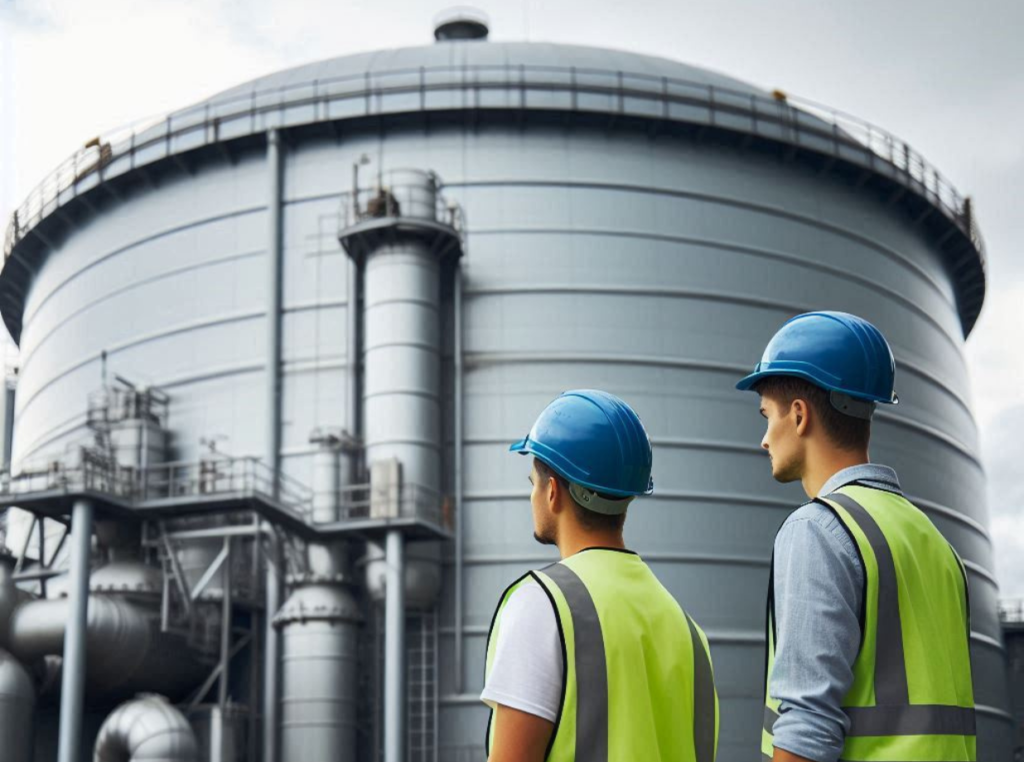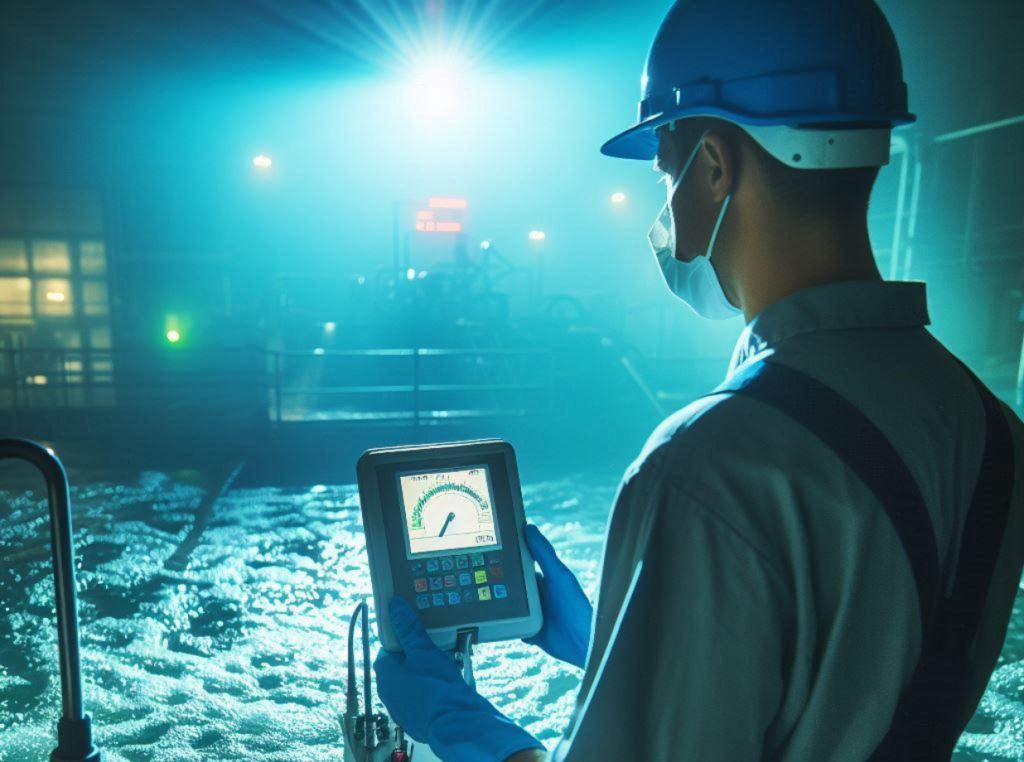Have you ever wondered how industrial wastewater affects the treatment processes in our wastewater treatment plants? The answer lies in understanding the intricate dynamics of the activated sludge process, a cornerstone of modern wastewater treatment.
Understanding the Activated Sludge Process
The activated sludge process is a biological method used in the secondary treatment of wastewater. This method relies on aeration and a biological floc composed of bacteria and protozoa to remove organic pollutants from sewage. It’s efficient, but its effectiveness can be significantly impacted by the introduction of industrial wastewater.
What is Activated Sludge?
Activated sludge is essentially a mixture of microorganisms and suspended solids. This mixture treats wastewater by consuming organic matter, converting it into water, carbon dioxide, and new biomass. The sludge settles out in a settling tank, resulting in a clear effluent that can be further treated or discharged.
The Mechanism
The process begins in an aeration tank, where the wastewater is mixed with the activated sludge. Air or oxygen is introduced to maintain aerobic conditions and promote microbial activity. The microorganisms digest the organic pollutants, and the treated water with biomass flows into a secondary settling tank. Here, the activated sludge settles out, and the clearer effluent moves on for further treatment or discharge.
Industrial Wastewater: An Overview
Industrial wastewater includes a variety of pollutants that differ significantly from domestic sewage. These pollutants originate from various industries such as manufacturing, chemical production, oil refineries, and food processing plants. The composition of industrial wastewater can be complex and potentially harmful to the activated sludge process.
Common Pollutants in Industrial Wastewater
Industrial wastewater often contains high levels of:
| Pollutant Type | Examples |
|---|---|
| Organic Compounds | Phenols, hydrocarbons, solvents |
| Inorganic Compounds | Heavy metals, acids, alkalis |
| Nutrients | Nitrogen, phosphorus |
| Synthetic Chemicals | Pesticides, PCBs, detergents |
| Suspended Solids | Particles, sludges |
These pollutants can negatively affect the biological processes in the activated sludge system, impacting efficiency and performance.

The Impact of Industrial Wastewater
Industrial wastewater can introduce toxic substances, disrupt biological processes, and lead to operational challenges in the activated sludge process. Let’s break down the specific impacts:
Toxicity
Certain chemicals in industrial wastewater can be toxic to the microorganisms in activated sludge. When these organisms are harmed, their ability to digest organic pollutants is compromised, leading to reduced efficiency in wastewater treatment.
Nutrient Imbalance
Industries often produce waste with high concentrations of nutrients like nitrogen and phosphorus. While these are essential for microbial growth, an excess can lead to eutrophication, causing algal blooms and oxygen depletion in receiving water bodies.
pH Fluctuations
Industrial processes can discharge wastewater with highly variable pH levels. Microorganisms in activated sludge thrive in a neutral pH range. Extremes of acidity or alkalinity can inhibit their activity or even kill them, affecting the overall treatment process.
Heavy Metals
Heavy metals like cadmium, mercury, and lead can be particularly harmful. They are not biodegradable and tend to accumulate in the biomass, leading to toxicity and, ultimately, the death of microorganisms in the activated sludge.
Biodegradability
The ease with which industrial pollutants can be biodegraded plays a significant role in treatment efficacy. Non-biodegradable or slowly degradable compounds can persist, requiring additional treatment stages or affecting compliance with discharge standards.
Mitigating the Impact
To protect the activated sludge process from the detrimental effects of industrial wastewater, various mitigation strategies can be employed:
Pre-treatment
Industries can implement pre-treatment systems to remove or neutralize harmful contaminants before discharging wastewater into the municipal treatment systems. Technologies such as filtration, sedimentation, and chemical treatment can be effective.
Regular Monitoring
Constant monitoring of industrial effluents ensures that any harmful fluctuations or illegal discharges are quickly identified and managed, preventing long-term damage to the treatment process.
Source Control
Implementing source reduction strategies, such as altering manufacturing processes to produce less harmful waste or substituting toxic chemicals with more benign alternatives, can significantly reduce the impact on the activated sludge system.
Biological Augmentation
Introducing specialized microbial cultures that can degrade specific industrial pollutants helps enhance the resilience of the activated sludge process. This strategy can be particularly useful for handling complex organic compounds.
pH Adjustment Systems
Installing systems to balance pH levels in industrial effluents ensures that the wastewater entering the treatment plant is within the optimal range for microbial activity.

Case Studies Highlighting the Impact
Food Processing Industry
Food processing plants generate high-strength organic wastewater. In one case, a dairy processing plant’s effluent, rich in fats, oils, and grease (FOG), led to significant operational challenges at a local wastewater treatment plant. The high organic load caused excessive biomass growth, clogging aeration systems and causing operational inefficiencies. Pre-treatment solutions, including dissolved air flotation (DAF) systems, were introduced to reduce the FOG content before discharge, improving the performance of the activated sludge process.
Chemical Manufacturing
A chemical manufacturing facility discharged effluent containing high concentrations of phenolic compounds and heavy metals. This resulted in reduced microbial activity and overall efficiency of the activated sludge system due to toxicity. By implementing advanced oxidative pre-treatment methods, such as ozone treatment, the phenolic compounds were degraded, and heavy metals were precipitated out, significantly improving the process performance.
Textile Industry
Textile industry effluent often contains high levels of dye compounds and salts. One textile plant’s effluent led to color removal challenges and elevated salt concentrations that impacted the osmoregulation in microorganisms, reducing their efficacy. Introducing reverse osmosis (RO) systems for salt removal and advanced oxidation processes (AOPs) for dye breakdown helped mitigate these issues, fostering better outcomes in the activated sludge process.
Optimizing the Activated Sludge Process for Industrial Wastewater
Process Control Strategies
Effective process control involves monitoring key parameters such as dissolved oxygen levels, sludge age, and organic loadings to maintain optimal conditions for microbial activity.
Equipment Upgrades
Investing in advanced aeration equipment, real-time monitoring systems, and automated control systems can enhance the resilience and adaptability of the activated sludge process in handling industrial wastewater.
Operational Training
Training plant operators to understand the unique challenges posed by industrial effluents and equipping them with the skills to adjust processes accordingly is crucial. Knowledgeable staff can quickly identify issues and implement corrective measures to sustain treatment efficacy.
Collaborative Approaches
Fostering collaboration between industries and wastewater treatment facilities can facilitate the development of tailored solutions that address specific industrial pollutants while ensuring regulatory compliance and environmental protection.

Benefits of Addressing Industrial Wastewater Impact
Enhanced Treatment Efficiency
By mitigating the negative impacts of industrial wastewater, you can enhance the overall efficiency of the activated sludge process, leading to cleaner effluents and reduced environmental impact.
Regulatory Compliance
Implementing effective treatment strategies helps meet stringent regulatory standards, avoiding penalties and ensuring community and environmental health.
Cost Savings
Pre-treating industrial wastewater and optimizing the activated sludge process can lead to significant cost savings by reducing operational disruptions, equipment wear, and the need for additional treatment stages.
Sustainable Practices
Adopting sustainable waste management practices aligns with environmental conservation efforts, promoting a greener and healthier ecosystem.
Future Trends and Innovations
Membrane Bioreactors (MBRs)
Combining membrane technology with the activated sludge process, MBRs offer enhanced separation efficiency and can handle higher organic loads, making them ideal for treating industrial wastewater.
Advanced Oxidation Processes (AOPs)
Utilizing oxidation techniques to break down complex organic pollutants, AOPs can be integrated with the activated sludge process to improve the treatment of recalcitrant compounds.
Bioreactors
Bioaugmentation with genetically engineered microorganisms designed for specific industrial pollutants can further optimize the degradation and treatment process.
Real-time Monitoring and AI
The integration of real-time monitoring systems and artificial intelligence (AI) can provide predictive insights and automated process adjustments, ensuring consistent treatment performance despite varying industrial inputs.

Conclusion
Understanding the impact of industrial wastewater on the activated sludge process is critical for maintaining effective wastewater treatment operations. By addressing the challenges posed by industrial pollutants and employing innovative solutions, you can ensure the sustained efficiency and environmental compliance of your treatment systems. Through collaboration, advanced technologies, and proactive measures, the activated sludge process can continue to play a vital role in managing our wastewater and protecting our waterways.
Resources on Industrial Wastewater’s Impact on Activated Sludge Process
Scientific Articles
- Effects of Industrial Pollutants on Activated Sludge Microbial Communities
- Strategies for Enhancing Activated Sludge Resilience to Industrial Toxins
- Comparative Study: Municipal vs. Industrial Wastewater Treatment Efficiency
Government and Regulatory Resources
- EPA Guidelines on Industrial Wastewater Management in WWTPs
- European Union Best Available Techniques for Industrial Emissions
Industry Publications
- Water Environment Federation: Industrial Pretreatment Programs
- International Water Association: Case Studies on Industrial WWTP Optimization
Educational Resources
- Online Course: Managing Industrial Effluents in Biological Treatment Systems
- Webinar: Innovative Technologies for Industrial Wastewater Treatment
Books
- Brown, A. & Lee, S. (2023). “Industrial Wastewater Treatment: Challenges and Solutions”. CRC Press.
- Patel, H. (2022). “Activated Sludge Processes for Industrial Effluents”. Elsevier.
Technical Reports
- OECD Report: Emerging Contaminants from Industrial Sources
- UN Industrial Development Organization: Cleaner Production in Wastewater Management
Remember to verify these links and update them with actual, current resources on the impact of industrial wastewater on the activated sludge process and strategies for mitigation.